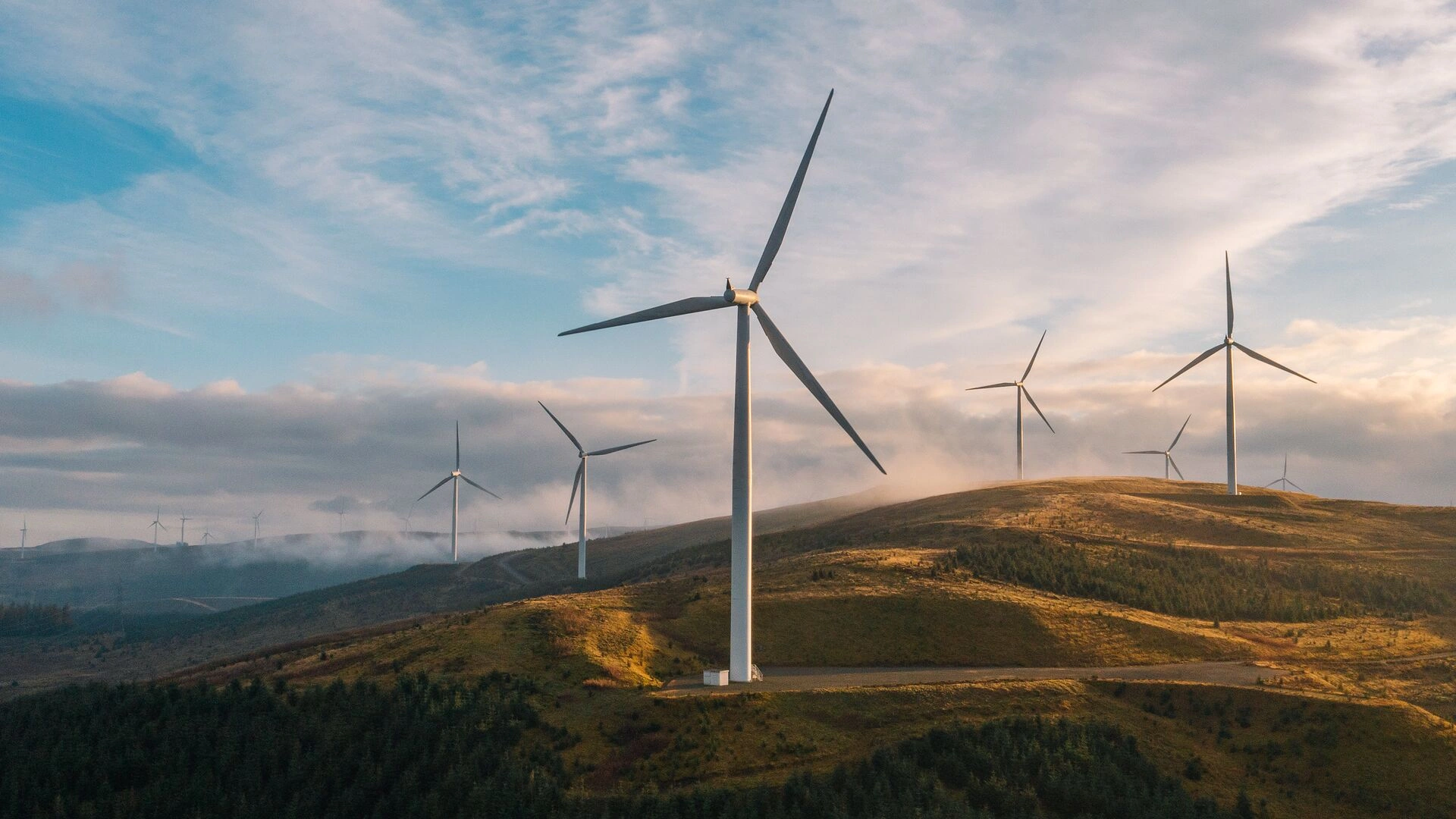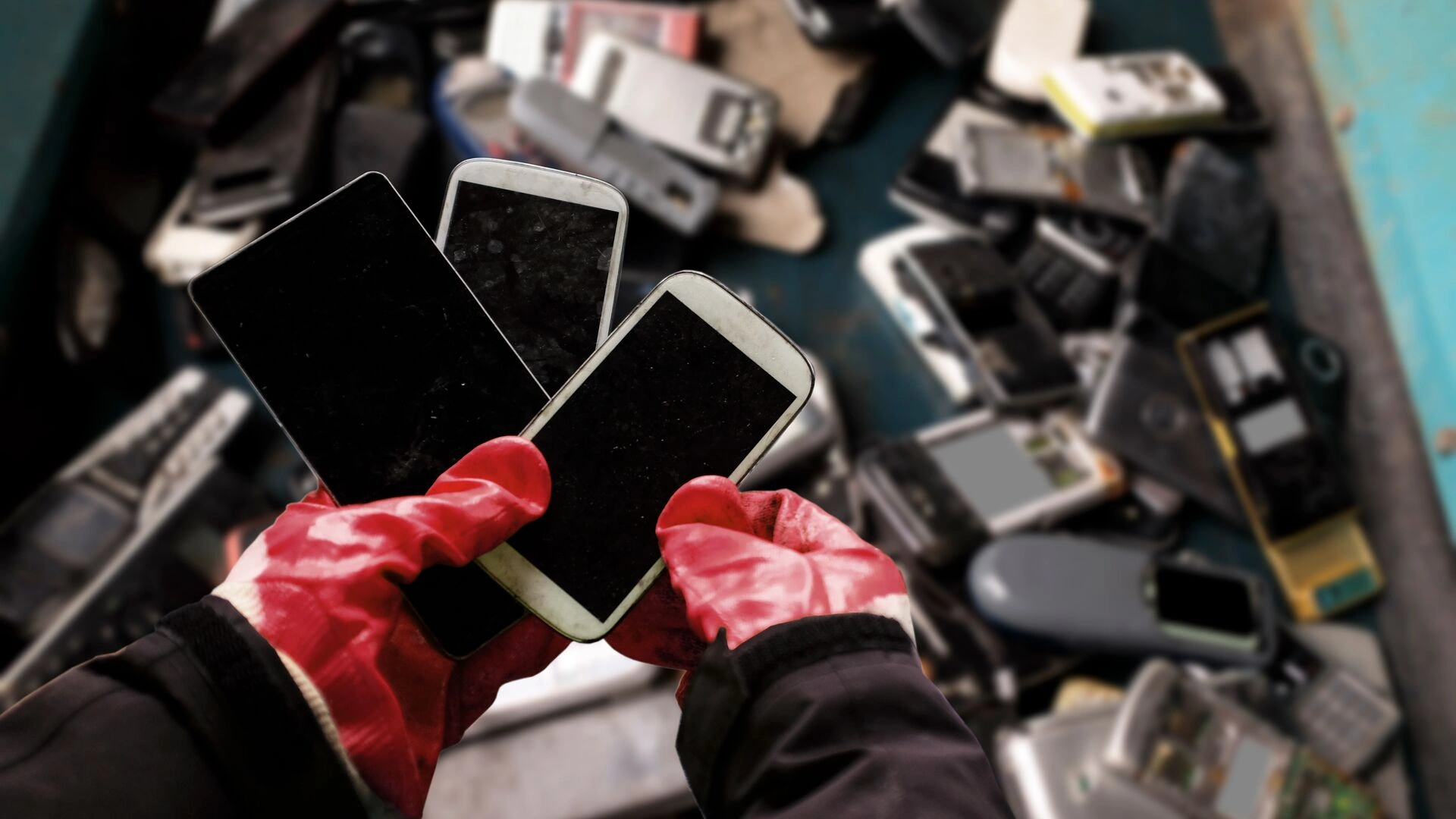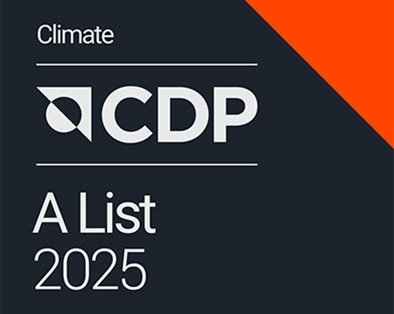By Joakim Reiter, Vodafone Group Chief External & Corporate Affairs Officer
Vodafone’s purpose is to connect everyone. We help to protect the planet by reducing our environmental impact and helping society decarbonise.
Our strategy centres on three areas: tackling carbon emissions, promoting circularity and helping to enable the clean industrial transition. We are also starting to consider how our activities impact nature and biodiversity and the role of connectivity in protecting nature.
Last year we published our first Climate Transition Plan. This outlines the actions we’ll take during FY25-27 to reduce emissions in line with our climate targets and build climate resilience into our business.
This year, we continued to embed our Protect the Planet strategy across our business, making progress towards our aim of reaching net zero across our full value chain and improving the circularity of the technology we use and sell.
Tackling carbon emissions to reach net zero by 2040

The telco sector contributes an estimated 1.8% - 2.8% of global GHG emissions. That’s why it’s important that Vodafone minimises the environmental impact of activities within our business and across our entire value chain.
Vodafone’s own Scope 1 and 2 GHG emissions come directly from our own and controlled operations, and indirectly from the energy we buy and use.
During FY25, we reduced our Scope 1 and 2 emissions from our own operations by 60.8% to 0.27m tCO2e (tonnes of carbon dioxide equivalent), down from 0.69m tCO2e in FY24. This currently equates to an 84% reduction from our FY20 baseline.
This year, I am also proud to confirm that we have matched 100% of the grid electricity purchased and used in our global operations with electricity from renewable sources.
This is a significant achievement, delivered by greater use of power purchase agreements (‘PPAs’) and the purchase of renewable energy certificates (‘RECs’) in markets where they are available.
In addition to the energy we buy, we have taken action to improve the energy efficiency of our mobile and fixed-line networks.
This includes deploying the latest generation of radio hardware, activating smart power-saving features, increasing the use of AI in our energy management, introducing flexible energy storage and ramping up smart metering in our operating companies.
We continue to develop solutions to help phase out the use of fossil fuels in our operations and increase the amount of energy used that has been generated from renewable sources for both our stationary equipment and vehicle fleet.
For example, we installed microturbine technology in Romania and progressed a proof-of-concept trial of a metal hydride hydrogen energy storage system in South Africa.
We have also identified sodium-ion batteries as a potentially suitable and cost-effective technology to improve energy storage and flexibility. We’re trialling these batteries at two European sites and in South Africa and the initial results look positive.
And we continue to electrify our fleet by introducing a new policy to transition to battery Electric Vehicles (‘EVs’) for company cars in Germany, while centralising the management of our European vehicle fleet.
Although we’ve made progress in tackling carbon emissions, transitioning to renewable energy across our markets remains challenging. In some of our markets, RECs or similar energy attribute tracking systems are not available for companies to buy. Where we face these constraints, we support renewable purchasing in nearby grid-connected countries to support the energy transition in the wider region.
Vodafone’s Scope 3 GHG emissions are an indirect result of our activities or business model. Although these activities are not within Vodafone’s direct operational control, we recognise that they are essential to our business model. We can play a role to influence our value chain partners to reduce their GHG emissions.
In FY25, our Scope 3 GHG emissions decreased by 8% to 6.61 million tCO2e compared to the previous year. This is an 8% decrease compared to our FY20 baseline year. The decrease was primarily driven by a reduction of equity stake in our investments.
Our total Scope 3 emissions fluctuate with the level of our equity investment in
other companies, particularly in regions where the energy transition remains challenging like India.
We also helped to reduce our Scope 3 emissions by accelerating our efforts to decarbonise our supply chain, for example by introducing sustainable procurement practices, continuing to work with our key suppliers and encouraging customers to reduce their emissions when using our products.
We also encourage our customers to make choices that result in lower carbon emissions by offering services that encourage circular practices, and work to help our customers tackle their emissions by reducing the lifecycle carbon footprint of the digital technology products and services we provide to them.
Since FY20, we have enabled the cumulative avoidance of 116.5 million tCO2e through the use of our digital products and services. This is around 141 times the emissions generated from our own operations in FY24.
53.5% of our 200 million IoT connections help our customers to reduce their own emissions.
Promoting circularity

The UN estimates that as much as 50 million tonnes of electrical waste (‘e-waste’) is produced globally each year, with only 20% being formally recycled.
At Vodafone, we are striving to ensure that our network equipment and device e-waste is reused, resold, or sent for recycling.
Our strategy focuses on two areas of e-waste - the network equipment used to run our fixed and mobile access networks, and the electronic devices that we provide or sell to customers.
During FY25, we are proud to announce that we have achieved our 2025 target to reuse, resell, or send for recycling 100% of our decommissioned network equipment.
However, even where our network equipment e-waste is sent to our third-party waste management partners for recycling, we understand that not all materials are recovered during the recycling process.
Although we have reached an important milestone, we recognise that there is more work to do to build a fully circular system for network equipment and hazardous e-waste. We will continue to work with our partners towards this.
To reduce device e-waste and promote circularity, we are committed to helping more of our customers to bring their used electronic devices back to us.
This year, we scaled our ‘1 million phones for the planet’ campaign with the World Wildlife Fund (‘WWF’). Since the start of the campaign, we have collected an estimated 700,000 used phones for refurbishment and reuse, recycling, or donation to social causes.
We have redoubled our efforts to help enable our customers to extend the life of their devices, such as repair, insurance, and trade-in. Our ‘second life’ proposition is now available in six markets, trade-in in eight markets, and device care insurance in eight markets.
Nature and biodiversity
The world is currently undergoing a dangerous decline in nature, with one million species at risk of extinction.
At Vodafone, we understand that our activities can impact nature, and we seek to protect nature and biodiversity by identifying, understanding and managing our impacts on nature and the environment.
This year, we conducted an analysis of our operations and supply chain to understand where these key impacts, risks and dependencies lie in our value chain, and how they affect nature and biodiversity.
We seek to use these findings to foster change within Vodafone and to protect nature and biodiversity through responsible management and digital technologies.
We are also taking action across our markets to apply digital technologies to tackle nature and biodiversity challenges. Through these technological applications, we aim to demonstrate the power that technology can have in addressing challenges such as resource management, interactions between humans and species and the protection of our ecosystems.
Find out more about our progress on protecting the planet.

























